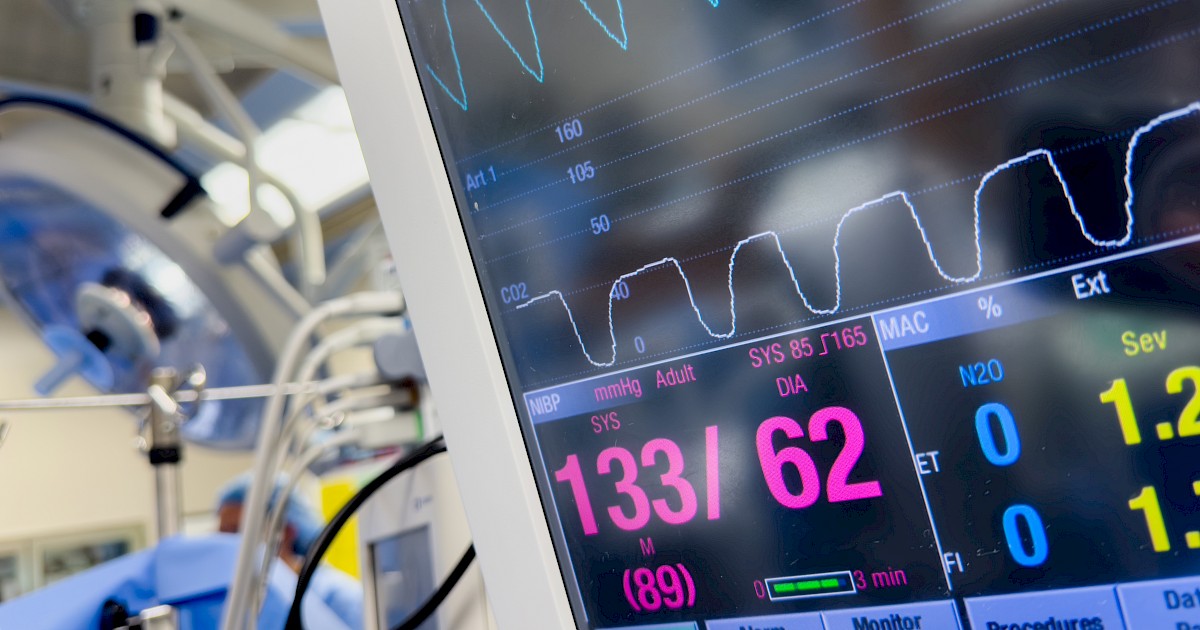4 Ways to Make Cardiac Telemetry More Cost-Effective

There’s no question that cardiac telemetry saves lives in acute hospital settings. Continuous monitoring allows clinicians to detect arrhythmias associated with stroke, myocardial infarction, and other dangerous cardiac events. However, telemetry monitoring is also expensive. Hospital telemetry orders can cost almost $54 more a day per patient than non-telemetry days.
The connection between the overuse of telemetry monitoring and higher healthcare costs is well documented. Those expenses include labor hours–nurses spend an average of 20 minutes per patient on telemetry-related tasks each day. High costs are also associated with the burden of those tasks, including alarm fatigue, which is known to contribute to clinician burnout and adverse patient health outcomes.
Responding to these concerns, the American Heart Association (AHA) released telemetry utilization guidelines in 2004 (updated in 2017). These evidence-based guidelines include recommendations for reducing the use of telemetry outside of the ICU.
The good news is that the path to telemetry savings is the same road to safer, more effective patient care. The following steps can help set hospitals up for success in reducing telemetry spending.
1. Streamline telemetry device management
One hospital study determined that clinically unnecessary telemetry orders added $37,995.84 in extra monthly costs. After implementing the AHA guidelines, another hospital saw a 70% reduction in telemetry utilization, resulting in an estimated annual savings of $4.8 million. Yet, despite the evidence, many hospitals still lose money due to a lack of telemetry utilization protocols.
The American Nurses Association recommends that hospitals create a multi-disciplinary team when first implementing the AHA guidelines. This team, including cardiologists, attending physicians, nurses, telemetry technicians, and clinical managers, provides well-rounded expertise when developing organization-specific telemetry reduction criteria and procedures.
To incorporate the AHA telemetry guidelines into workflows, consider the following:
- Initiation criteria
- Discontinuation criteria
- Remove telemetry pre-selection in EHR order sets
- Offer duration option of 12, 24, or 48 hours in order sets
- Require providers to select a clinical indication on orders
- Include telemetry info on patient status boards
All stakeholders should have open paths for communication. Hospitals should review telemetry during huddles, include telemetry in reporting, and keep channels open for nurses and physicians to discuss reducing or discontinuing telemetry orders.
2. Increase staff education
Excessive telemetry use can often be traced to improper ordering and other issues arising from under-trained clinical staff. In a 2016 study, only 58% of clinical providers noted an accurate indication for a telemetry order, while just 26% of providers were even aware their patient was currently on telemetry.
More recently, a 2022 survey revealed the following:
- 81% of physicians believe that cardiac telemetry is overused, while only 48% of nurses share this view.
- A smaller proportion of nurses (41%) feel comfortable with the AHA guidelines, whereas only 25% of physicians are comfortable with them.
- When it comes to discontinuing telemetry, 75% of physicians are comfortable with the idea, but only 42% of nurses feel the same.
- Interestingly, 67% of nurses review telemetry orders daily, while only 19% of physicians do so.
- Residents scored lower than attending physicians in terms of their comfort level with the guidelines (75% vs. 11%), their willingness to discontinue telemetry (94% vs. 70%), and their frequency of daily telemetry order reviews (44% vs. 12%).
Hospitals requiring regular, formalized training on telemetry practice standards ensure that physicians and nurses understand the AHA guidelines and are equipped to put them to use. These trainings should present the guidelines as evidence-based practices rather than simply protocols.
Examples of training topics include:
- How telemetry overuse contributes to poor care and stressful workflows
- How following the AHA guidelines is both safe and effective
- Clinical indications for telemetry
- Recommended durations for non-ICU patients
- EHR ordering
- Updating telemetry in patient records
- Communication protocols between hospital departments, physicians, physicians and nurses, and nursing
In 2018, the Lewis Gale Medical Center in Virginia implemented a basic telemetry education intervention. Residents were given a copy of the AHA guidelines at the beginning of each rotation, and daily conversations about telemetry utilization were encouraged on rounds. This simple intervention shortened the number of days patients spent on telemetry by nearly half a day, was associated with shorter hospital stays, and did not increase patient mortality rates.
3. Leverage advanced technology
Recent developments in healthcare technology can make a significant impact on telemetry costs. Mobile cardiac telemetry systems offer more accurate diagnoses than an event or Holter monitor. They also saved hospitals $10,000 or more over two years when used with cardiac patients after ablation, coronary artery bypass graft, and valve septa.
Increasing EHR agility and connectivity, data analytics, and remote patient monitoring solutions contribute to optimizing telemetry usage through improved order sets, inter-departmental data exchange, and enhanced clinical decision-making. These technologies can also help decrease reliance on traditional monitoring systems for early identification of cardiac events and assist in facilitating proactive interventions.
4. Repair telemetry devices with quality parts
Optimizing telemetry equipment utilization can reduce the need to purchase costly new devices. Streamlining utilization can also help limit wear and tear on existing equipment. To further extend the lifespan of telemetry devices, look for 3rd-party repair companies and parts manufacturers with a solid commitment to quality. Businesses that participate in voluntary ISO 13485 certification, use a robust quality management system, and make products in the USA are more likely to provide exceptional parts and services.
Final Thoughts
Healthcare organizations should recognize that curtailing telemetry spending will take time and effort. Organizations will need to invest in the development of new protocols and training programs, cultivate internal stakeholder buy-in, and may need to forge new external partnerships. Rest assured, the investment will pay off in substantial benefits for hospitals, clinicians, and patients.
To learn about more vetting and partnering with high-quality 3rd-party biomedical manufacturers for your telemetry needs, download our free guide for healthcare leaders now.

